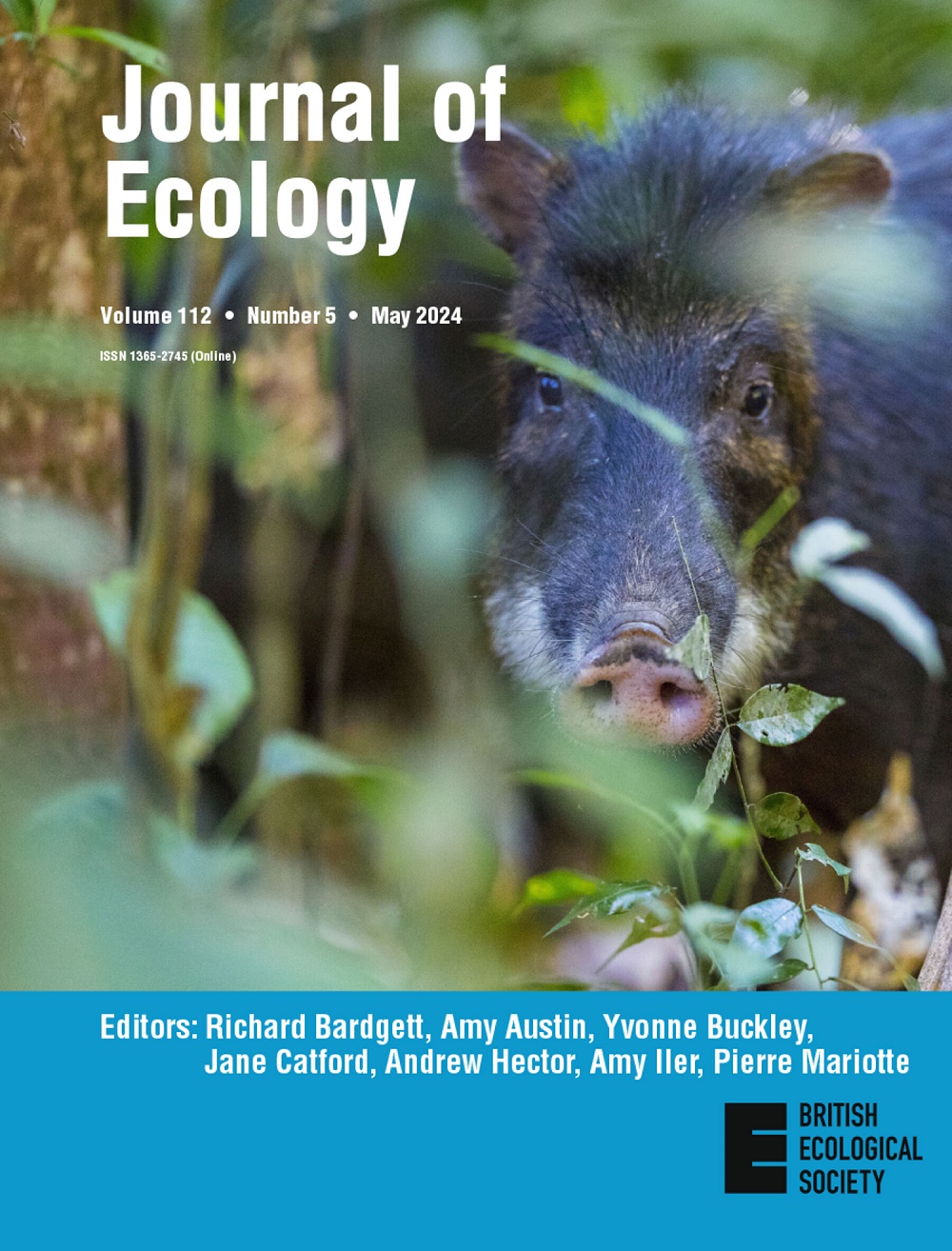热带维管附生植物叶片和根系之间的组一致但种特有的氮同位素分异
IF 5.6
1区 环境科学与生态学
Q1 ECOLOGY
引用次数: 0
摘要
由于冠层生境中氮的严重限制,附生植物的内部氮同位素组成(δ15N)变化很小。然而,缺乏经验证据使这个问题悬而未决,使叶面δ15N的解释在理解附生植物的N经济方面变得复杂。本文计算了中国西南热带西双版纳地区24种附生植物叶片与根系间δ15N(∆15Nleaf-root)的变化。随后进行线性回归和方差分解,以确定潜在的驱动因素。在附生植物中观察到一个较小的∆15Nleaf - root(+0.43‰),在不同类群中表现出相对一致的值(- 0.20‰~ 1.78‰),但在物种特异性上表现出显著的值(- 2.13‰~ 2.15‰),与系统发育无关,反映了外部氮源和附生植物氮获取策略的综合影响。特别是,正的∆15Nleaf - root值主要与叶片N和根碳(C)相关,而负的∆15Nleaf - root值与叶片C同位素组成(δ13C)相关,表明不同的15N分馏过程在起作用。合成。这些结果首次表明,与土根植物相比,附生植物的叶根δ15N最小,但值得注意,反映了冠层生境中更严重的N胁迫,并表明叶面δ15N(当考虑15N分等时)可以为热带附生植物的N动态提供有价值的见解。本文章由计算机程序翻译,如有差异,请以英文原文为准。

Group-consistent but species-specific nitrogen isotope fractionation between leaves and roots in tropical vascular epiphytes
求助全文
通过发布文献求助,成功后即可免费获取论文全文。
去求助
来源期刊

Journal of Ecology
环境科学-生态学
CiteScore
10.90
自引率
5.50%
发文量
207
审稿时长
3.0 months
期刊介绍:
Journal of Ecology publishes original research papers on all aspects of the ecology of plants (including algae), in both aquatic and terrestrial ecosystems. We do not publish papers concerned solely with cultivated plants and agricultural ecosystems. Studies of plant communities, populations or individual species are accepted, as well as studies of the interactions between plants and animals, fungi or bacteria, providing they focus on the ecology of the plants.
We aim to bring important work using any ecological approach (including molecular techniques) to a wide international audience and therefore only publish papers with strong and ecological messages that advance our understanding of ecological principles.
 求助内容:
求助内容: 应助结果提醒方式:
应助结果提醒方式:


